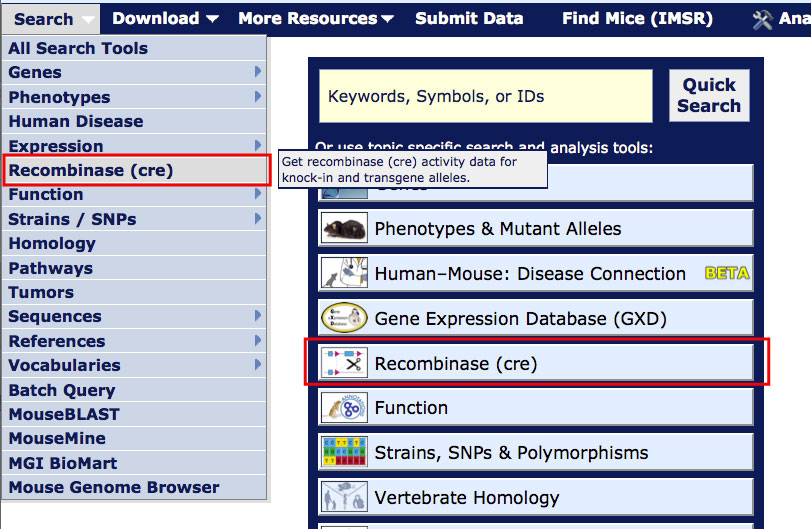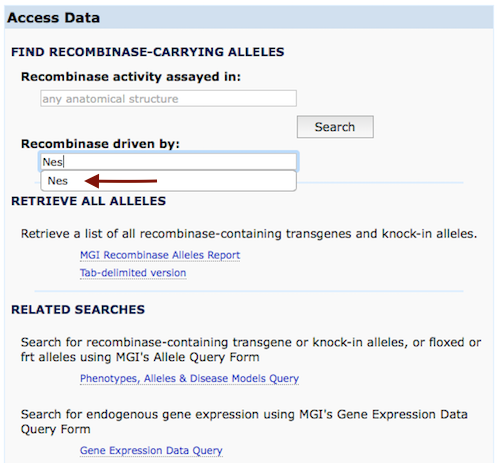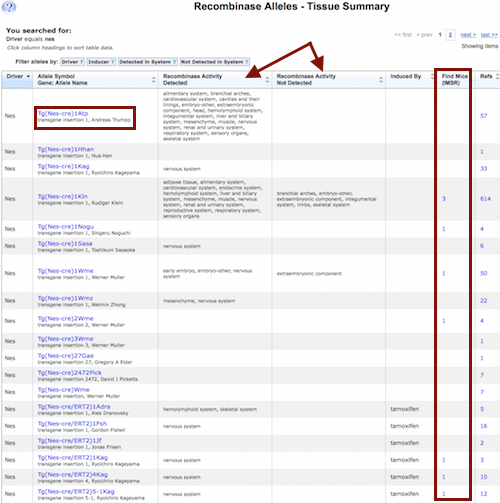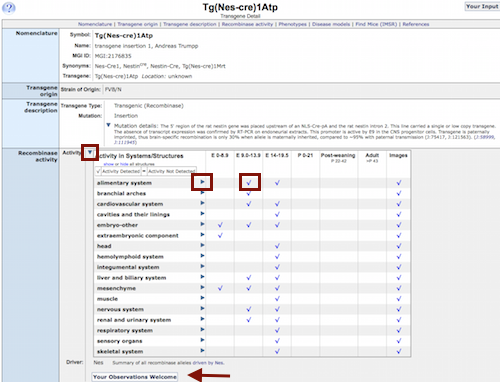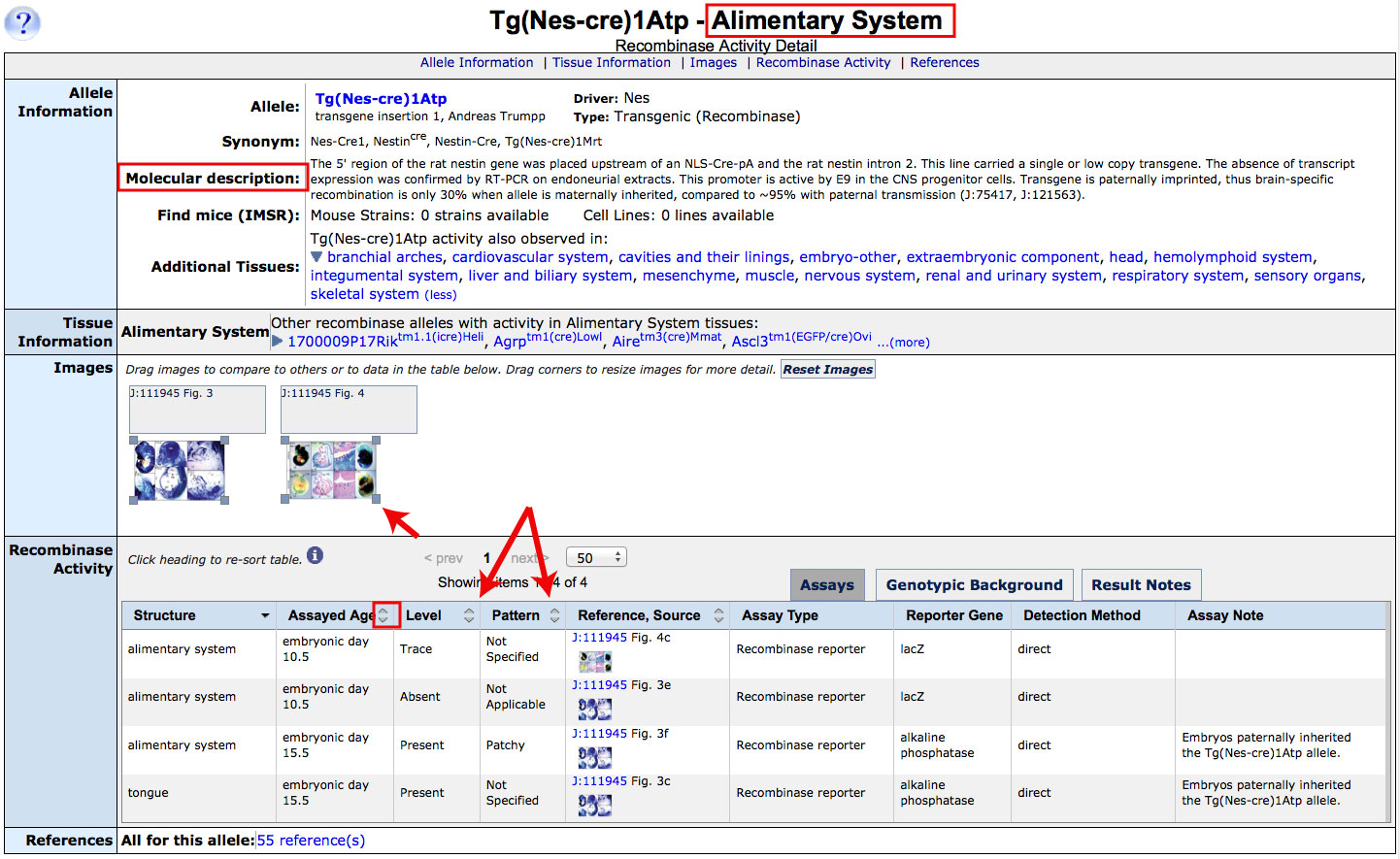 How do I find existing recombinase-expressing
transgenes/knock-ins that have a given promoter (driver)?
How do I find existing recombinase-expressing
transgenes/knock-ins that have a given promoter (driver)?
| Find Recombinase-Carrying Alleles | ||
|
On most MGI pages, you can access the Recombinase (cre) Activity page from the Search menu as shown in the image at right. From the homepage, you can also access this page by clicking on the "Recombinases (cre)" button. For this tutorial, open the Recombinase (cre) Activity page in a new window. Scroll down this page for further instructions. The Access Data section allows you to search for recombinase expression in a specified tissue or under the control of a given gene.
|
|
|
| Example 1. Finding a transgene expressing recombinase under the control of Nes. | ||
|
|
|
|
|
|
|
|
|
|
|
|
